A media mention is the use of a brand name or keyword that you’re tracking. A mention can occur in various mediums, like print newspapers, online news websites, magazines, and blog posts.
Just like the other key PR measurements we’ve covered, media mentions need to be consistently and accurately monitored to ensure the quality and effectiveness of PR work.
Let’s explore media mentions and how to best tackle them in your daily PR workflow.
- What is a media mention?
- How to track media mentions like the pros
- Why visibility of media mentions really matters
- How to never miss a media mention
If you’re looking for a tool to track your media mentions, try Prowly’s Media Monitoring with the 7-day free trial. Start tracking media mentions right away and see if the tool fits your needs.
What is a media mention?
On the best days in PR, a media mention feels like kicking a field goal. It’s a major score! On the most challenging days, negative press mentions can throw a wrench into your best-laid plans and pivot your PR campaign into a whole new direction.
The “media mentions” definition can also be dependent on a PR campaign’s goals. For a specific campaign or client, the definition may also include mentions on social media and in online discussion forums.
PR professionals track media mentions for the brands they represent, as well as the brand’s competitors. They also track keywords around the brand’s industry to determine the most-discussed topics at the moment.
Tracking media mentions is a frequent and regular task for PR, often done daily to find news that’s breaking online.
How to track media mentions
Tracking media mentions is one of the most important tasks a PR professional oversees. It’s one PR task that will never get skipped because it’s so closely linked to measuring the value of your work.
PR professionals use one of three methods to track mentions:
- Manual searches
- Google Alerts
- Media monitoring tools
→ The Manual search
The first tracking method is manual searches. This is when a PR professional searches for brand names and keywords in multiple search engines to find mentions. Yes, we’re talking about entering a list of keywords one-by-one into Google and looking through pages of results.
📛 Since media mentions tracking is usually a daily task, you can quickly see how much time this can take away from a busy PR pro’s schedule! Even if this work is delegated to a junior team member, there is a substantial cost involved with the necessary labor hours.
→ Google Alerts
The second method is using Google Alerts, which is often tempting because it’s a free service that’s simple to set up. However, we’ve already written about how limited its results can be.
📛 Many mentions get missed and the alerts aren’t always timely. Essentially, it’s not reliable enough to trust with this important task.
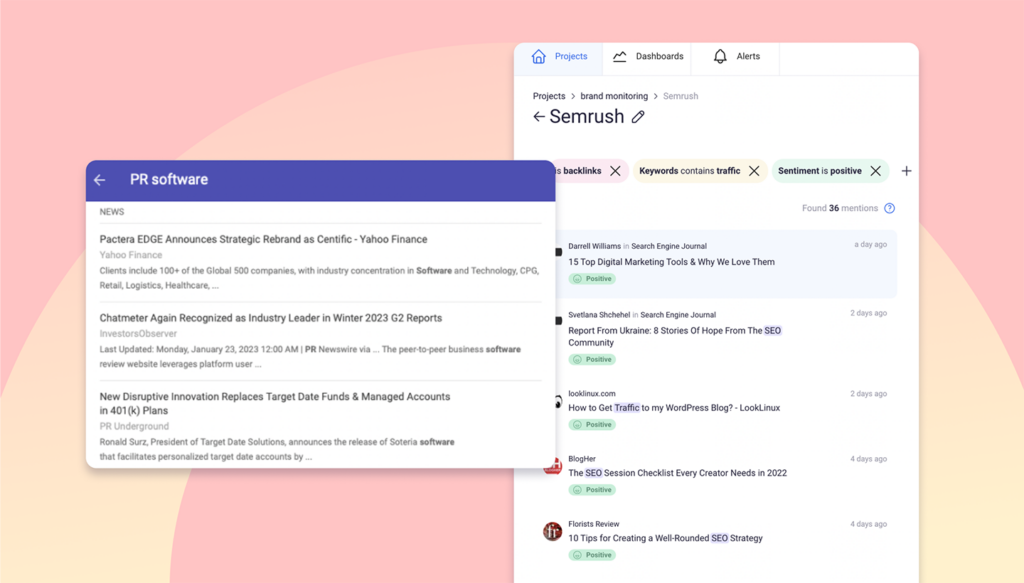
After trying both of these methods, most PR professionals decide to track brand mentions in the easiest way yet: with media monitoring tools.
→ Media Monitoring Tools
Media monitoring tools do all of the heavy lifting for you, tracking media mentions automatically and sending you alerts based on your custom filters. They’re reliable, provide data in a user-friendly manner, and may even generate your monthly PR reports.
💡 To choose the best media monitoring tool, read our full guide “The Best Media Monitoring Tools for PR Professionals” where we compare the top tools, their prices and functionality.
If you don’t feel like going through the process of comparing media mentions tools, Prowly’s media monitoring is completely free for 7 days so you can see if it’s a match for you.
Why are media mentions important?
So why is so much time and energy invested in tracking media mentions?
It’s important to invest time and energy in tracking media mentions because media mentions increase brand awareness, which is a critical function of PR for a brand’s sales funnel.
They do this by:
- Showing that a brand is relevant.
- Introducing potential customers to the brand’s product or service.
- Connecting with brand loyalists so they remain raving fans.
- Sharing a brand’s campaign message across different mediums.
- Pointing out potential issues to the PR team (when a mention’s meaning is negative).
Most importantly, media mentions are how PR professionals show the value of their work. They are measurable outcomes to dedicated campaign efforts.
Media mentions are also highlighted and assessed for individual value in monthly PR reports and are typically what a PR’s client or supervisor views as “results” at the end of a PR campaign.
This is exactly why a PR professional wants to catch all media mentions and identify the particular value of each one.
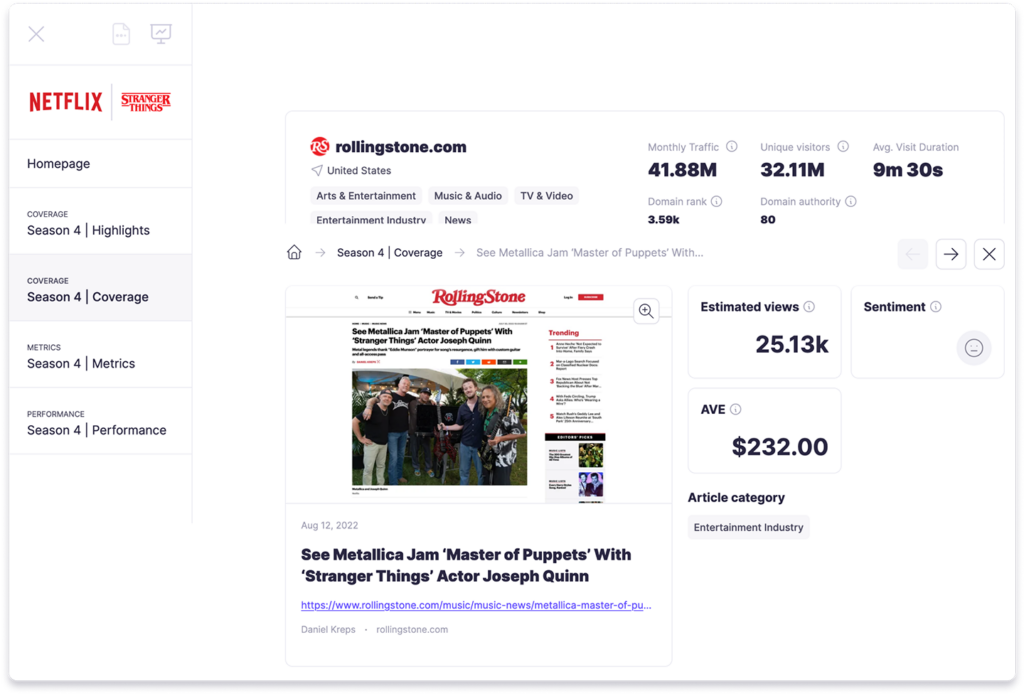
How to never miss a media mention
With so much on the line, it’s no wonder that PR professionals turn to automated PR software like Prowly to get solid media monitoring coverage and build impressive PR reports that “wow” their clients.
For example, in Prowly’s PR software with media monitoring, you simply set:
- brand names
- spokesperson names
- keywords
- authors you want to track
And the Media monitoring tool takes care of finding and tracking media mentions in online news websites, blogs, and discussion groups like Reddit.
You can even set up a search on backlinks to the website link you’re distributing as part of your campaign.
Not only can Prowly’s media monitoring tool find international mentions, but it can also find mentions before Google has even indexed them, so you can see them earlier than a manual Google search would provide.
You can use filters to determine exactly what you want to see, so your results reflect what’s most important to you. For example, you can limit your search to media mentions from a selected country, language, or desired source type.
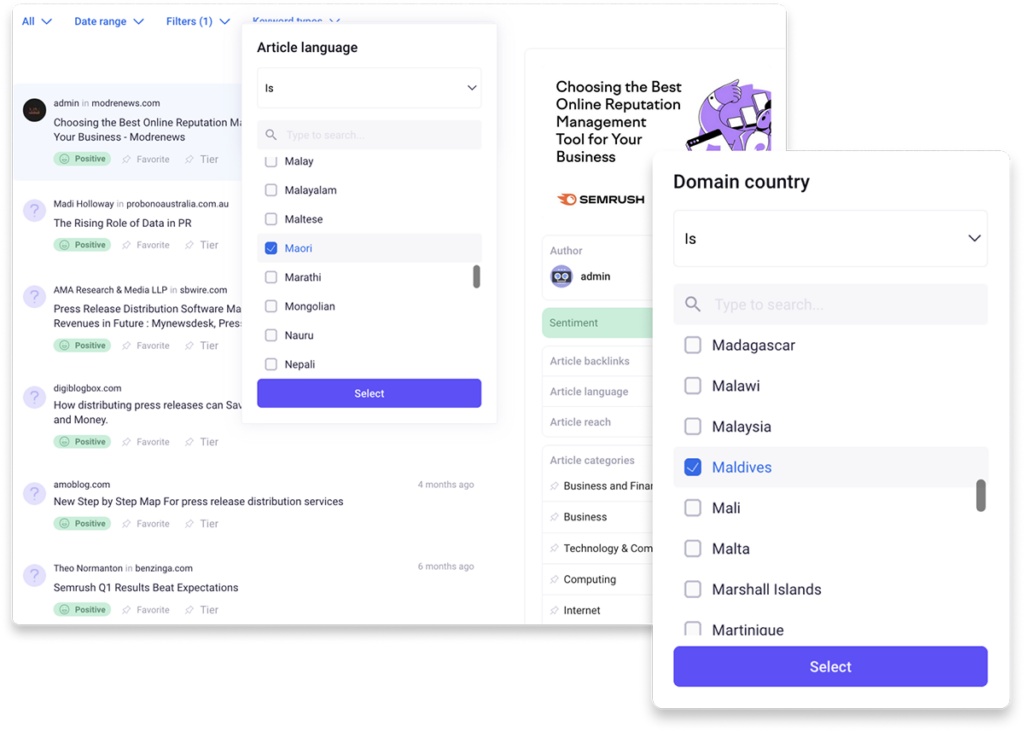
Then, set up email alerts based on what you want to see and when. Think about how much time you’ll save every day, arriving to work with the most recent media mentions waiting in your inbox.
But that’s only the start. The software then gives your mentions meaning and value, providing additional data on each mention like sentiment, domain authority, and estimated reach.
A helpful and easy-to-read dashboard presents a summary of the data, allowing you to spend more time strategizing, rather than on research and charting.
Of course, you can track more PR metrics that matter in Media Monitoring – such as Share of Voice and AVE’s alternatives.
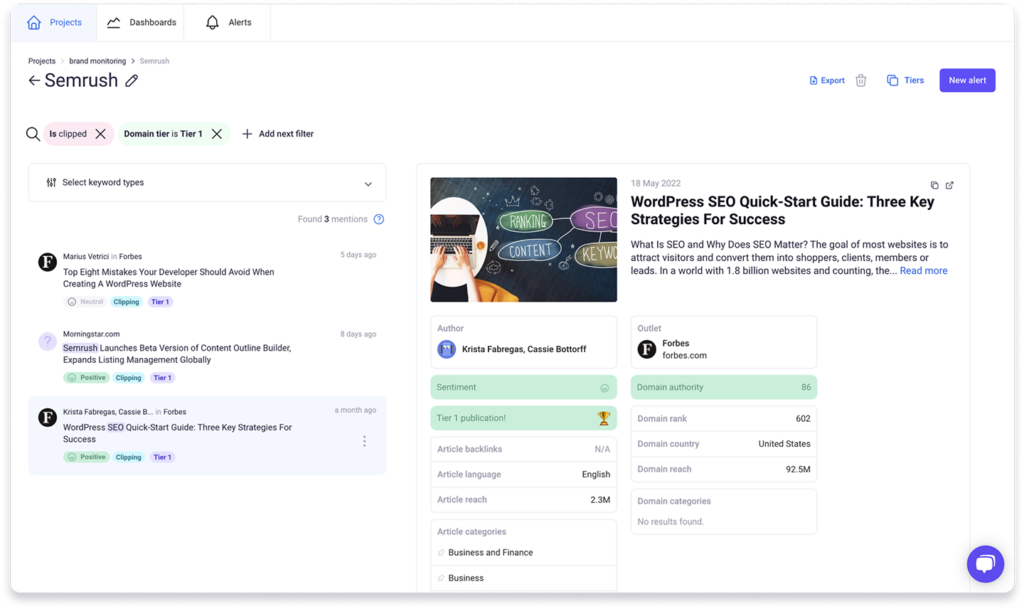
Finally, PR reports can be automatically generated at the end of the month or campaign! Customize the reports to your liking too. Add in timeline charts that present online clippings over a time period and choose a data presentation that correlates specific business outcomes with your PR work.
If you want to dive deeper into the use of press clippings for better monitoring and reporting, check out this Practical Guide to Mastering PR Clippings.
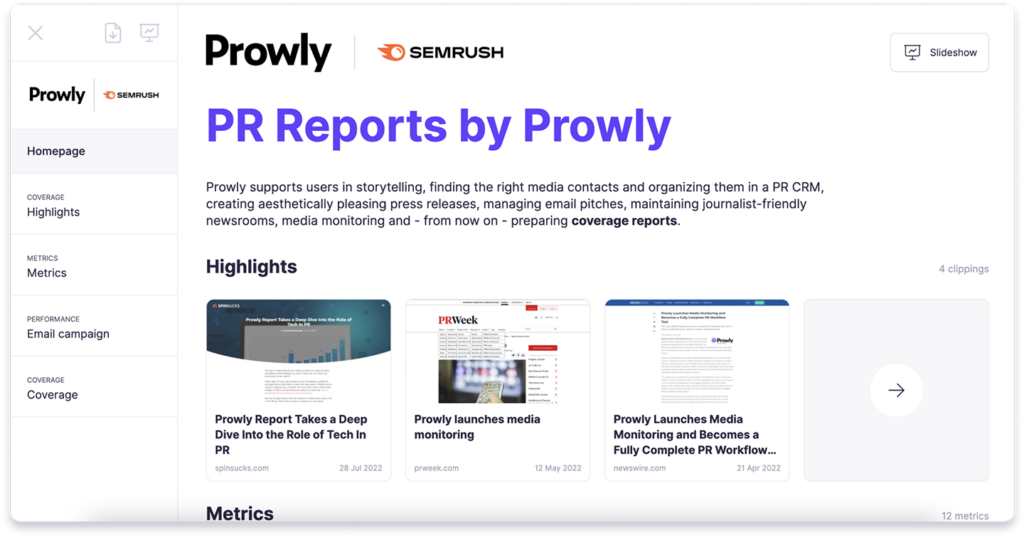
PR automation software turns recurring PR tasks that feel like a chore into a valuable dashboard where campaign results can be analyzed and reported quickly.
Getting to results-driven data faster also provides extra time to pivot a campaign that’s not working, or double down on one that’s quickly gaining traction.
Getting Started with Media Mention Monitoring
There are three ways that PR pros approach media mention monitoring: through manual research, with Google Alerts, or with media monitoring tools.
All can get you data to analyze and report, but only one approach gets you real-time, thorough data with details like sentiment, reach, and media outlet importance.
If you’re ready to give a media monitoring tool (with added PR reporting!) a try, we’re here to get you started ASAP.


